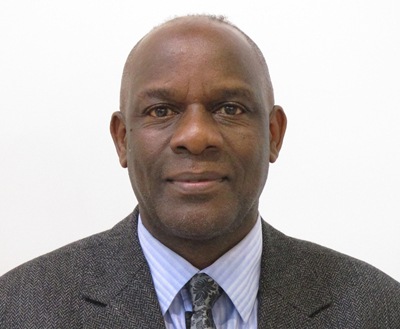Mobile bullying thrust into the spotlight
08 December 2016 | Story by Newsroom
NRF-rated researcher and Deputy Dean Professor Michael Kyobe of the Department of Information Systems in the Faculty of Commerce has won a highly prized R1.6 m grant for research into mobile bullying in high schools.
Making the announcement, Professor Ingrid Woolard said, “I know how much work goes into these funding applications – well done! Good luck with the research – we look forward to seeing the outputs on this fascinating topic.”
The topic is “Investigating the nature and factors influencing mobile bully-victim behaviour in South African high schools”.
Mobile bullying can be defined as one form of electronic bullying committed through email, chat rooms, instant messaging and small text messages using mobile phones.
Kyobe said that one major impediment to the development of appropriate mobile bullying interventions is the lack of understanding of the various forms of bullying and their characteristics.
Bullies are often perceived to fall into one category of aggressors, yet there are differences in aggression and their root causes. Consequently, solutions are proposed which ignore these specific differences between the bullies.
Two main categories of bullies identified in literature are pure bullies and bully-victims.
Pure bullies are those aggressors perceived to be more confident. They dish out intimidation and harassment and often don't get victimised by other bullies.
Bully-victims have received limited focus in South Africa. They are more difficult to recognise and as such a clear picture of their behaviour and the conditions in which they operate is difficult to establish. Bully-victims are believed to swing between being the bully and the victim.
Little is still known about this category of bullies and more specifically those using mobile technology, which is more widely used than conventional methods to commit anti-social behaviours today.
In his proposal to the NRF, Kyobe said that the present study is a continuation of the research they have been conducting on mobile bullying since 2013.
“It aims to understand the specific differences in behaviour and risk profiles of mobile bully-victims in South African high schools … [and] the factors influencing their behaviour and how this category of bullies evolves in South African schools.”
The study will be conducted in six provinces in South Africa and will involve multiple respondents, including learners in grades 8–12, teachers, school administrators, parents and law enforcement agents.
Kyobe added that while South Africa has complied with the United Nation legislations on the protection of the child and has implemented programmes to reduce bullying in schools, these have not prevented the escalation of mobile bullying.
In their recent study of female bully-victims in South African high schools, they observed that this category of bullies is growing and threatening, it is under reported and there is limited effort by researchers to find appropriate interventions.
Kyobe says, “It is hoped that this study will identify appropriate interventions that schools can use to prevent the escalation of bully-victim behaviour.”
Story Carolyn McGibbon. Photo Supplied.
 This work is licensed under a Creative Commons Attribution-NoDerivatives 4.0 International License.
This work is licensed under a Creative Commons Attribution-NoDerivatives 4.0 International License.
Please view the republishing articles page for more information.










